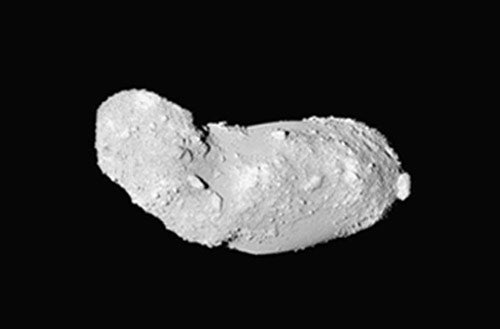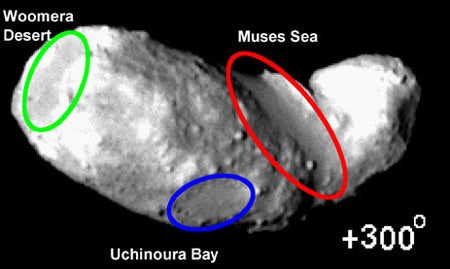The sense of exhilaration felt a few weeks ago when Japan’s Hayabusa spacecraft closed in on near-Earth asteroid Itokawa turned to concern recently when another piece of hardware failed.
On September 12, Hayabusa — Japanese for “falcon” — positioned itself just 12 miles (20 kilometers) above the asteroid’s surface. Attaining this point — called the “gate position” — marked a major milestone in the mission and the start of serious science operations.
All seemed well with Hayabusa, and the spacecraft continued to close in on the asteroid in preparation for two historic firsts: the deployment of a small lander, called Minerva, and the collection of material from Itokawa’s surface.
However, as Hayabusa neared the “home position,” at a distance of 4.2 miles (6.8 km), elation turned to apprehension. An important part of the spacecraft’s attitude control system, called a reaction wheel, failed. These devices, which are basically spinning flywheels mounted on bearings, control the vehicle’s orientation by changing their rate of spin.
Mission managers are assessing the consequences of these technical hardships for the mission and studying ways to minimize fuel use. They remain optimistic that Hayabusa will be able to accomplish its primary tasks of dropping off Minerva and capturing a small piece of Itokawa’s surface.
The spacecraft has already nearly completed its mapping of Itokawa. The images contain many puzzles. Sho Sasaki, in a presentation at last week’s Dust in Planetary Systems conference in Hawaii, showed pictures of smooth and rough areas, some containing boulders many yards (meters) in diameter. The presence of large boulders on the surface suggests the asteroid’s interior may be a loosely held “rubble pile.”
Scientists speculate Itokawa’s strange shape may be the result of a collision between two smaller asteroids, which fused into the 1,650-foot-wide (500m) asteroid observed today. A smooth area, tentatively dubbed the “Muses Sea” by mission scientists, may mark the area of contact. (The name plays off the mission’s original name, MUSES-C.)
Mission planners currently expect to choose a landing site in mid-October. Approximately 1 month later, Hayabusa is slated to descend to the asteroid’s surface, collect a small sample, and drop off Minerva. Then, in December, the spacecraft will depart Itokawa, and return pieces of the asteroid to Earth in June 2007.











